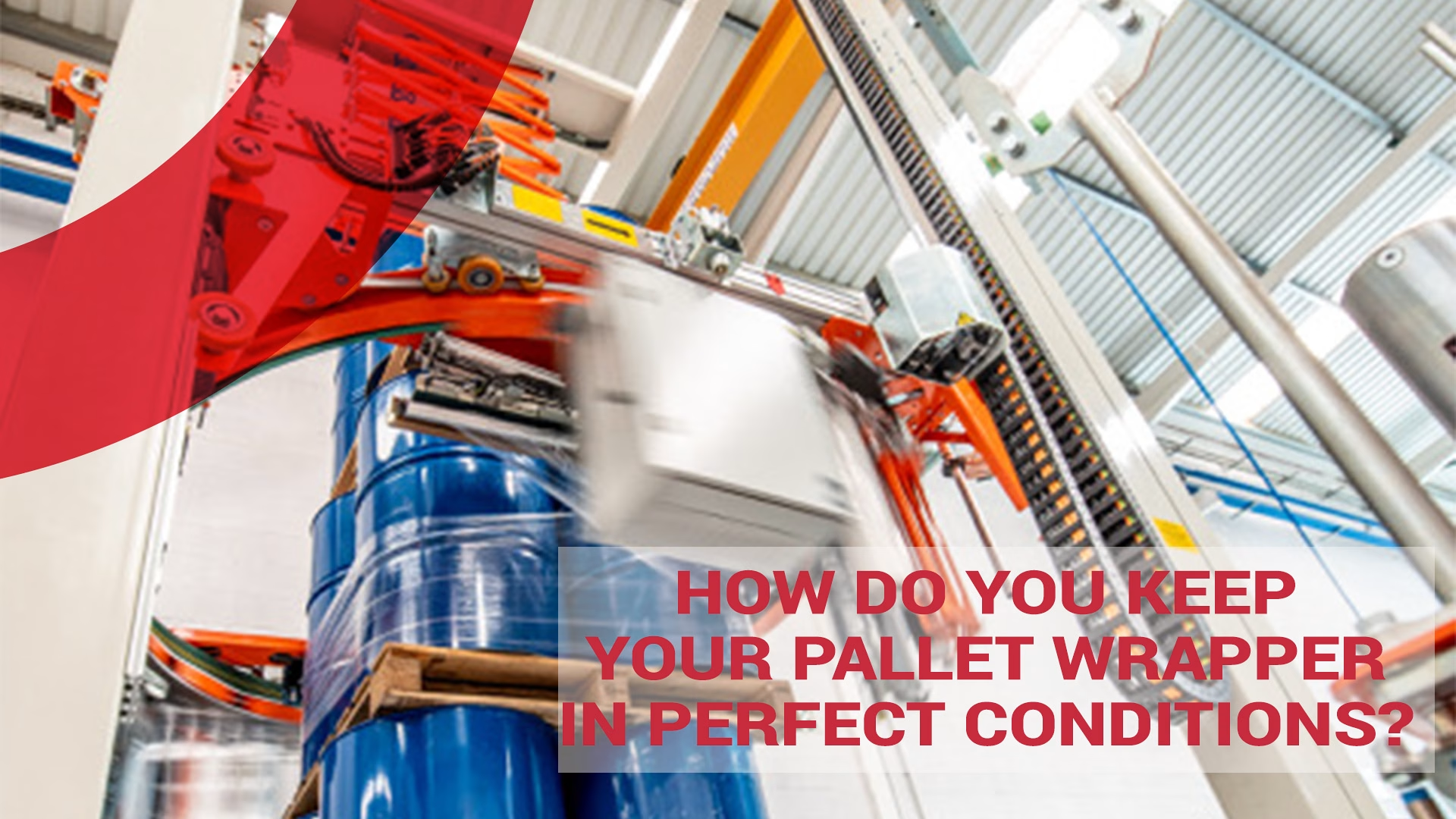Maintaining a pallet wrapper is key if you want to maximize its performance and extend its useful life. Want to know how to achieve this? Don’t worry! We’ll explain it more here.
Tips for proper maintenance of a pallet wrapper
Purchasing a pallet wrapper initially involves choosing its maintenance options. We generally recommend considering the price-performance ratio because the most expensive machine may be the most economical in the medium and long term. The quality of the materials or the useful life of the parts are factors to consider.
Furthermore, and no less important, maintaining a pallet wrapper involves a series of systematic actions. It’s obvious that not taking care of the machine when appropriate will negatively impact its performance. This is where the involvement of employees and management comes into play. It’s no wonder that it’s necessary to have the know-how to work and clean, and staff play an essential role in this.
Consequently, we recommend these steps to ensure your pallet wrapping machine lasts longer and is in perfect condition. If you want models like the Saturn 6 to perform at their best, you must follow these tips. Take note:
1. Turn the machine on and off when appropriate
The first thing to do, and it’s important, is to turn the machine on and off when appropriate. First, because to function properly, it needs to be turned on a little bit in advance. And second, because turning it off not only saves energy but also reduces wear on the motors, which is completely unnecessary.
There are models that easily indicate the operating point. And it’s important not to get distracted, because this can cause problems in the medium and long term. Nowadays, thanks to certain mobile apps, it’s easier to control remotely.
2. Perform Regular Cleaning for Pallet Wrapper Maintenance
Regular cleaning of the machine is another essential step to keep it in perfect condition. To do this, follow these guidelines:
- Clean the exterior of the machine of any dust, water, or grease. This is a way to minimize the chances of surface deterioration and corrosion. Exterior cleaning can be done frequently and does not require special qualifications. The only thing you need to check is that the liquid you use is appropriate.
- Open the interior and use specialized items to clean it. Keep in mind that this is where dust or grease blockages tend to cause the most problems, and they can cause problems with daily operation. It is very important here that cleaning is carried out by qualified personnel due to the potential risk involved.
Consequently, cleaning when appropriate (or when you suspect it is necessary) saves problems. It is worth considering, given that a lack of it entails a recurring risk of breakdowns.
3. Grease periodically
Chafing and friction between parts are fatal to the machine’s proper functioning. And sometimes, they may lack a little grease to prevent problems. As part of your preventive maintenance actions, you should always consider this possibility. This can be verified with a simple inspection. Today, thanks to Big Data and automation, it’s easier to perform these checks so you can detect the problem before it manifests, lubricating when necessary.
4. Check the wrapping tension
Checking the wrapping tension is another key point to ensure there are no problems. The reason? Inadequate tension, in addition to wasting more material, creates jamming problems in certain parts and, ultimately, in the motor. For this reason, the person who turns on the wrapping machine should always check the tension to ensure it is correct. This point is very important, which is why a mechanic should check it before it starts working.
5. Replace parts that reach the end of their useful life
Internal parts have a specific useful life, which you can find out when you purchase the machine (if it’s new). In this case, it’s a good idea to make a projection and, when the time comes, make the replacement.
Most of the time, if it’s internal parts, it’s worth replacing them rather than buying a new one. However, you may encounter the problem of not having spare parts because they’re no longer manufactured; if you find yourself in this situation, you should consider what’s best for you because the parts may be more expensive. In this sense, the manufacturer’s reputation counts, and a lot. But you should know that, if it’s not a very old machine, you shouldn’t have any problems.
In any case, and within the maintenance of a pallet wrapper, replacing parts is an action that can be preventative or corrective. The sooner you do it, the better. After all, a small problem with a part can ruin the operation because the machine breaks down.
6. Establish a maintenance schedule
Establishing a maintenance schedule is another necessary condition for good maintenance. Ultimately, it involves leveraging new technologies to perform preventative and, why not, detective maintenance. This way, the risk of problems arising from failure to detect them in time will be minimized.
This measure can be carried out by the machine manager or, if there isn’t one, by an external company. Therefore, it’s a good way to gain from day-to-day work. And any company that regularly works with a wrapping machine should keep this point in mind.
Pallet Wrapper Maintenance: Conclusion
Pallet wrapper maintenance can be done well if you understand the steps we’ve outlined. Do you want to buy a high-quality wrapping machine for your company? At Movitec, we can help you find the one that best suits your needs. Contact us and don’t hesitate to ask!
